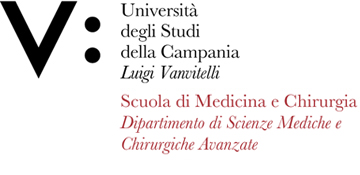Valerio NARDONE
Insegnamento di DIAGNOSTICA PER IMMAGINI E RADIOTERAPIA
Corso di laurea magistrale a ciclo unico in MEDICINA E CHIRURGIA (Sede di Caserta)
SSD: MED/36
CFU: 2,00
ORE PER UNITÀ DIDATTICA: 20,00
Periodo di Erogazione: Primo Semestre
Italiano
| Lingua di insegnamento | ITALIANO |
| Contenuti | DIAGNOSTICA PER IMMAGINI: |
| Testi di riferimento | Villari, G.Biti, C.Fava, A.Giordano, B.Beomonte Zobel, Diagnostica per Immagini, Medicina Nucleare, Radioterapia. |
| Obiettivi formativi | Il Corso fornisce allo studente le conoscenze teorico e pratiche per la corretta prescrizione degli esami di diagnostica per immagini tradizionale, tomografica e di Medicina Nucleare e relativa interpretazione dei referti, nonché per le indicazioni e per i fondamentali schemi di trattamento radiante delle più frequenti malattie neoplastiche. Vengono inoltre forniti gli strumenti per una valutazione dell’appropriatezza dei principali iter diagnostici in base al quesito clinico, e per una corretta compilazione delle richieste di esami diagnostici di primo livello. Infine vengono illustrate le modalità di impiego delle radiazioni a scopo terapeutico in oncologia, in via esclusiva o integrata con altre modalità terapeutiche. |
| Prerequisiti | Anatomia umana, anatomia patologica |
| Metodologie didattiche | Lezioni frontali in aula. |
| Metodi di valutazione | Esame orale. La prova orale, valutata in trentesimi, si prefigge l'obiettivo di accertare l'acquisizione degli obiettivi prefissati. Viene valutata la conoscenza relativamente ai contenuti del programma, unitamente con la capacità di sintesi, di effettuare collegamenti e la capacità espositiva dello studente. Non è consentito durante le prove alcun ausilio cartaceo od informatico. La prova d’esame sarà basata sulla comprensione dei percorsi diagnostici, e su domande dove sarà richiesta la conoscenza adeguata di tecniche, metodiche e percorsi diagnostici trattati nel corso delle lezioni. |
| Programma del corso | ° DIAGNOSTICA PER IMMAGINI |
English
| Teaching language | Italian |
| Contents | DIAGNOSTIC IMAGING: |
| Textbook and course materials | Villari, G.Biti, C.Fava, A.Giordano, B.Beomonte Zobel, Diagnostica per Immagini, Medicina Nucleare, Radioterapia. |
| Course objectives | The course provides students with theoretical and practical knowledge for the correct use of diagnostic imaging, and for the fundamental radiation treatment of the most frequent malignant diseases. It also provides tools for evaluating the appropriateness of the main diagnostic procedure based on the clinical question, and for correct completion of requests for diagnostic imaging of first level. Finally, the course illustrates radiotherapy applications in clinical oncology, exclusively or integrated with other therapeutic modalities |
| Prerequisites | anatomy and pathology |
| Teaching methods | Teaching techniques: Lectures supported by presentation of slides in Power Point. |
| Evaluation methods | Oral test. An oral examination at the end of the course will evaluate the achievement of the learning outcomes, along with student analytic and synthetic ability. Students will be asked to make connections among the different topics using a proper language. It is not allowed the use of books as well as notebooks or mobile phones during the examination. The exam will be based on an understanding of the diagnostic imaging paths and on questions where appropriate knowledge of the techniques and methods of diagnostic imaging treated during the lessons will be required. |
| Course Syllabus | ° IMAGE DIAGNOSTICS Recalls of anatomy and physiology of the main organs Human application of radiological techniques with and without contrast media: conventional and digital radiography, conventional and digital angiography, computed tomography, magnetic resonance, ultrasound. Application to man of nuclear-medical techniques with radioactive tracers: Static and dynamic scintigraphy, Single photon emission tomography - SPECT, Positron emission tomography - PET. Integrated role of radiological and medical-nuclear techniques in the diagnosis of the main pathologies of the apparatuses: cardiovascular, respiratory, gastroenteric, urogenital, locomotor, of the Central Nervous System, of endocrinological pathologies and of pediatric and haematological diseases. Interventional Radiology: Methods and clinical applications with particular regard to diagnosis (biopsies) and treatment (drainage, percutaneous ablation, alcoholization) of neoplasia and angiography (embolization, angioplasty) |








